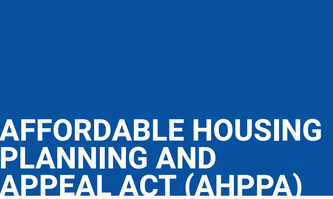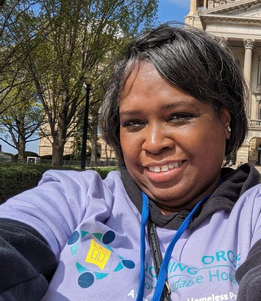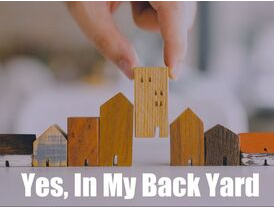 Isaac Rubenstein is an AmeriCorps VISTA, working as the Community Education Coordinator with Joining Forces and Connections for the Homeless. Projects he’s working on involve establishing new Joining Forces chapters, helping North Suburban Cook County municipalities with their advocacy efforts, strengthening Joining Forces’ community partners, and many others.
0 Comments
 Following the passage of our AHPAA reform bill (PA 103-0487) during the 2023 General Assembly session, the Illinois Housing Development Authority (IHDA) released the updated Statewide Affordability List. IHDA updates and publishes this information every 5 years as part of its administration of the Affordable Housing Planning and Appeals Act (AHPAA). This law requires any municipality with a population of 1,000 or more to have at least 10% of its housing be affordable (1) or to have a plan in place to achieve that goal.  Michael Mallory is the Chief Government Relations Officer at Connections for the Homeless and started his role here in spring of 2023. His role involves managing our public funding, overseeing the compliance of our government contracts, cultivating external relationships with government officials, and advocacy.  Lily Buchen is another Connections for the Homeless employee that lobbied in Springfield with Joining Forces in April. Lily is the Communications Coordinator for Connections’ Development Team, and she believes that communications in advocacy work is important. Advocating means to have a voice, and effective communication through that voice is a way to get people to care enough about a cause to take action. Communication can be educational and emotionally compelling, which can sway public opinion about issues and even influence legislation. The topic of affordable housing can be overwhelming, and its complexity can be a barrier for people who are considering becoming advocates. However, advocates do NOT need to know all the details—the many varieties of programs to create affordability, how new housing is financed, the ins and outs of zoning, etc. This type of knowledge can be helpful and can come with time and work. But it’s not necessary before one can become an effective advocate.
 Robert Todd is not only an affordable housing advocate who lobbied with Joining Forces in Springfield, he is also a Connections client with lived experience. As someone who has experienced homelessness and relied on services to provide shelter for him and help him look for housing he can afford, the statewide bills that we advocated for were especially important to Robert and people with similar experiences. The affordable housing crisis is growing across the nation. We are seeing this in Evanston—more people coming to Connections for the Homeless for help, more struggling to maintain housing they can’t afford, and more who have lost their homes. Our programs are full, and more people are living outside waiting for an opening. Without more affordable housing, we--Connections and the community--cannot meet the need.
And for more affordable housing to be created, more people need to be demanding it, finding ways to make it happen, supporting action, and fighting opposition. We need your help, and we’ve developed a new membership structure to make it easier for you to get involved.  Travon Bonner is one of many people who advocated for more affordable housing in Springfield with Joining Forces this spring. She is the Youth Program Supervisor at Connections for the Homeless, which involves providing support and resources to the full team of people who serve 60 transition-aged youth at Connections. Travon helps with in-house clerical tasks, manages one of Connections’ homes that is staffed 24/7, works on the program’s budgeting, and ensures that programming that’s offered suits the needs of the program’s participants. Joining Forces for Affordable Housing advocates for system change to make housing more affordable in our region. Recently, someone asked the sensible question of “What would it look like if the system changes were in place?” Here are four things that we believe help to answer that question.
|
|
© COPYRIGHT 2018. ALL RIGHTS RESERVED.
|





